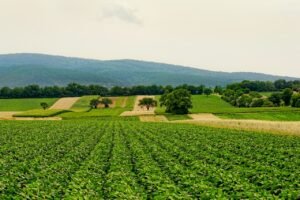
In the bustling world of urban farming, there lies a world of unique challenges waiting to be conquered. From limited space to environmental constraints, these obstacles often discourage many aspiring urban farmers. However, with determination, innovation, and a keen eye for sustainability, these challenges can be overcome. This article explores the various hurdles faced by urban farmers and provides valuable insights on how to navigate around them successfully. So, if you are ready to explore the world of urban farming and discover ways to unlock its potential, this is the perfect guide for you.
Access to Land

Limited Availability of Land
One of the main challenges faced by urban farmers is the limited availability of land. In densely populated cities, finding suitable plots of land for farming can be a daunting task. Most available land is already occupied by buildings and infrastructure, leaving very little space for agricultural purposes. This scarcity of land makes it difficult for individuals or communities interested in starting urban farms to find a suitable place to cultivate their crops and raise livestock.
High Cost of Urban Land
Even if land is available for urban farming, the high cost associated with urban land poses another major challenge. In urban areas, land prices are typically much higher compared to rural areas, making it financially challenging for aspiring urban farmers to acquire land for their farming operations. This high cost of urban land often acts as a barrier, preventing individuals and communities from pursuing their dreams of practicing agriculture in urban settings.
Land Use Regulations
Land-use regulations can also hinder urban farming initiatives. Many cities have zoning laws and regulations that restrict the types of activities that can be performed on specific parcels of land. These regulations are often designed to maintain the harmony and functionality of urban areas but may limit the use of land for agricultural purposes. The strict adherence to these regulations may require farmers to navigate through a complex web of permits and restrictions, further complicating the process of establishing and maintaining urban farms.
Limited Space
Small Plots and Rooftop Gardens
In urban environments, space is a precious commodity. With limited available land, urban farmers often have to make do with small plots of land or even unconventional spaces like rooftops. These small plots and rooftop gardens provide limited space for farming activities, requiring farmers to adopt innovative techniques to maximize production. Through vertical gardening, utilizing raised beds, and employing space-saving planting methods, urban farmers can optimize the limited space available to them and cultivate a wide variety of crops.

Vertical Farming Systems
To overcome the limited space challenge, urban farmers have turned to vertical farming systems. Vertical farming is a technique that involves growing plants in vertically stacked layers or integrated structures. By utilizing vertical space and specialized equipment like vertical towers or hydroponic systems, farmers can grow crops in a compact and efficient manner. Vertical farming not only maximizes the use of limited space but also offers the potential for year-round cultivation and reduces water consumption, making it a sustainable solution for urban agriculture.
Soil Quality and Contamination
Lack of Nutrients
Urban environments often suffer from poor soil quality due to the absence of natural nutrient replenishment processes. The soil in urban areas may be depleted of essential nutrients required for plant growth. This lack of nutrients can undermine the productivity and health of crops, leading to subpar yields. Urban farmers must address this challenge by amending the soil with organic matter, compost, and fertilizer to enhance its fertility. Additionally, employing crop rotation techniques can help replenish the soil by alternating nutrient demands.
Presence of Heavy Metals and Chemicals
Urban soils are also more susceptible to contamination by heavy metals and chemicals. These contaminants come from a variety of sources such as industrial activities, vehicle emissions, and improper waste disposal practices. Elevated levels of heavy metals and chemicals in the soil pose a significant risk to both plant and human health. Urban farmers need to be aware of these contaminants and take measures to test and remediate their soil to ensure safe and productive farming practices.
Remediation Strategies
Remediation strategies play a crucial role in addressing soil contamination in urban farming. Techniques such as soil testing can help identify the presence and levels of contaminants in the soil. In cases where contamination is detected, farmers can employ methods like phytoremediation, which involves using specific plants to absorb and detoxify contaminants from the soil. Another effective remediation strategy is the use of raised beds or containers with imported soil to minimize contact with contaminated soil. Implementing these remediation strategies can help urban farmers overcome the challenges associated with soil contamination.
Water Management

Limited Water Resources
Access to clean and sufficient water is a fundamental requirement for successful farming. However, urban areas often face challenges with limited water resources. Water scarcity is prevalent in many cities due to population growth, climate change, and inefficient water management practices. Urban farmers must develop sustainable water management strategies by implementing water-saving techniques and utilizing alternative water sources. These strategies can include rainwater harvesting, greywater recycling, and the use of drip irrigation systems to maximize water efficiency in urban farming operations.
Water Quality and Contamination
In addition to limited water resources, urban farmers also face concerns about water quality and contamination. Urban areas may have water sources that are contaminated with pollutants, chemicals, and pathogens, posing risks to crop health and food safety. It is essential for urban farmers to implement water quality monitoring protocols and invest in appropriate water treatment methods, such as filtration or disinfection systems, to ensure the water used for irrigation is of high quality and free from harmful contaminants.
Efficient Irrigation Techniques
To optimize water usage, urban farmers need to employ efficient irrigation techniques. Traditional irrigation methods, such as flood irrigation, can result in significant water wastage in urban farming settings. Instead, farmers can adopt water-saving practices such as drip irrigation or hydroponic systems, which deliver water directly to the plant roots, minimizing water loss through evaporation or runoff. These methods not only conserve water but also contribute to improved plant health and increased yields by ensuring targeted and controlled water delivery.
Climate and Weather Conditions
Temperature Extremes
Urban farming is often influenced by temperature extremes, which can pose challenges for crop growth and productivity. In densely built urban areas, concrete and asphalt surfaces retain heat, leading to elevated temperatures, particularly in heat island areas. High temperatures can cause plants to wilt, reduce photosynthesis rates, and increase water requirements. Urban farmers must adopt strategies to mitigate the effects of temperature extremes, including providing shade structures, using mulching techniques, and selecting heat-tolerant crop varieties.

Droughts and Heatwaves
Droughts and heatwaves are becoming more frequent and severe due to climate change, further intensifying the challenges faced by urban farmers. Extended periods of water scarcity and extreme heat can lead to crop failure, increased irrigation demands, and decreased crop quality. Urban farmers must focus on water conservation practices, such as efficient irrigation methods and rainwater harvesting, to mitigate the impact of droughts. Moreover, implementing shading techniques and employing heat-tolerant crop varieties can help withstand the heatwaves and maintain crop productivity.
Impacts of Climate Change
Climate change poses long-term challenges for urban farming. The unpredictable nature of weather patterns, increased frequency of extreme events, and shifting temperature regimes can disrupt crop growth and introduce new pests and diseases. Urban farmers must adapt their farming practices to the changing climate conditions by utilizing climate-resilient and disease-resistant crop varieties, implementing greenhouse or controlled environment farming, and practicing climate-smart techniques like water management and soil conservation. Building climate resilience is essential to ensuring the long-term viability of urban farming.
Pests and Diseases
Increased Pest Pressure
Urban farms are not immune to pests and diseases. In fact, the restricted space and higher population density in urban areas can lead to increased pest pressure. Pests like aphids, caterpillars, and rodents may thrive in urban environments, causing damage to crops. Urban farmers need to develop integrated pest management (IPM) strategies that incorporate biological, cultural, and chemical control methods. This approach focuses on preventing pest outbreaks, monitoring pest populations, and using targeted interventions while minimizing harmful impacts on the environment and human health.
Lack of Natural Predators
Urban farming settings often lack natural predators, which play a crucial role in pest control in traditional agricultural systems. The imbalance created by the absence of natural predators allows pests to multiply rapidly and cause substantial damage to crops. To address this issue, urban farmers can introduce beneficial insects such as ladybugs and beneficial nematodes that prey on common pests. Creating habitat and food sources for natural predators can also help attract and retain a diverse range of beneficial organisms that contribute to pest control.

Integrated Pest Management
Adopting integrated pest management (IPM) practices is vital for urban farmers in their efforts to control pests and diseases effectively. IPM involves a combination of preventive measures, regular monitoring, and targeted interventions based on the specific needs and characteristics of the farm. Examples of IPM techniques include crop rotation, physical barriers, companion planting, and the judicious use of pesticides only as a last resort. By integrating these strategies, urban farmers can strike a balance between pest control and environmental sustainability, ensuring healthy and productive crops.
Lack of Knowledge and Skills
Urban Agriculture Education
One of the significant challenges faced by urban farmers is the lack of knowledge and skills specific to the unique context of urban agriculture. Traditional agricultural practices may not be directly applicable or efficient in urban settings. Therefore, providing education and training specific to urban farming is essential to equip individuals with the necessary knowledge and skills. Urban agriculture education programs can cover a range of topics, including urban soil management, rooftop gardening techniques, sustainable water management, pest control, and marketing strategies.
Training and Skill Development
To overcome the lack of knowledge and skills, urban farmers must engage in training and skill development programs. These programs can be offered through community organizations, agricultural extension services, or educational institutions. Structured workshops, hands-on training, and mentorship programs can help farmers understand the unique challenges and opportunities of urban farming and develop the practical skills needed to be successful in this field. Accessible and comprehensive training initiatives are vital to ensuring that urban farmers have the necessary tools to overcome the challenges they may encounter.
Community Engagement
Community engagement plays a crucial role in supporting urban agriculture initiatives. By involving local communities, urban farmers can tap into a wealth of knowledge, experience, and resources. Community members can contribute to urban farming projects through volunteer work, sharing gardening tips, providing land or resources, or even becoming customers of the farm’s produce. Building strong community partnerships can foster a sense of collective responsibility, create a supportive network, and help address the challenges faced by urban farmers effectively.
Access to Capital
Limited Funding Opportunities
Access to capital is often a significant obstacle for urban farmers, particularly those from underserved communities. Starting an urban farm requires initial investment in land, infrastructure, equipment, and seeds, which can be financially burdensome for aspiring farmers. In many cases, traditional funding sources may be inaccessible or unaware of the unique needs and potential of urban farming enterprises. Increasing funding opportunities specifically tailored to support urban agriculture can empower individuals and communities to start and sustain their farming endeavors.
High Initial Investment Costs
The high initial investment costs associated with urban farming can deter potential farmers from pursuing their agricultural aspirations. In addition to land acquisition, costs may include constructing or retrofitting buildings, installing irrigation systems, purchasing specialized equipment, and acquiring organic inputs. Urban farmers need financial support and innovative financing options that can help offset these upfront expenses. Low-interest loans, grants, crowdfunding platforms, and partnerships with local businesses or organizations can provide the necessary capital to overcome this challenge.
Financial Support Programs
To address the access to capital challenge, governments, non-profit organizations, and private entities can establish financial support programs specifically designed for urban farmers. These programs can offer various forms of financial assistance, including grants, microloans, tax incentives, and subsidies. Additionally, mentorship programs or incubators can provide guidance and business development support to aspiring urban farmers, helping them navigate the complexities of securing funding and managing their finances. By increasing access to capital, these initiatives can promote the growth and sustainability of urban farming.
Marketing and Distribution
Selling Urban Farm Products
Urban farmers face unique marketing challenges, particularly when it comes to selling their produce. Finding suitable markets and customers for urban farm products can be a complex task due to the densely built nature of urban areas. However, the demand for locally grown and organic produce is on the rise, providing an opportunity for urban farmers to establish their market presence. Farmers can explore various marketing channels such as farmers’ markets, community-supported agriculture (CSA) programs, online platforms, and partnerships with restaurants or grocery stores to effectively sell their products.
Establishing Local Markets
To overcome marketing challenges, urban farmers can focus on establishing local markets within their communities. Collaborating with other local farmers, food artisans, or craft vendors to create a vibrant marketplace can attract consumers seeking fresh and locally sourced goods. Farmers’ markets, co-operative grocery stores, or pop-up markets can provide a platform for urban farmers to directly connect with consumers, build relationships, and raise awareness about their products. Building a strong local market presence can increase sales opportunities and foster community support for urban farming initiatives.
Distribution Logistics
Efficient distribution logistics are crucial for urban farms to deliver their products to customers in a timely and cost-effective manner. The close proximity of urban areas can present both opportunities and challenges in terms of distribution. Urban farmers can leverage this proximity by adopting direct-to-consumer distribution models, such as farm stands or home delivery services, to minimize transportation costs. Additionally, forming partnerships with local businesses, such as restaurants or grocery stores, can streamline distribution channels and provide an avenue for wider product reach. Effective distribution strategies contribute to the overall success and viability of urban farming ventures.
Community Engagement and Support
Building Partnerships
Building partnerships with various stakeholders is essential for the success and sustainability of urban farming initiatives. Collaborating with organizations, businesses, educational institutions, and local government bodies can create a network of support and resources. Partnerships can involve sharing knowledge and expertise, accessing land or funding opportunities, coordinating community events, or advocating for policy changes. By working together, urban farmers and their partners can effectively address the challenges of urban farming and create a thriving ecosystem that benefits the entire community.
Involving Local Communities
Engaging local communities is key to the long-term success of urban farming. Involving community members in the planning, implementation, and decision-making processes not only promotes their ownership and connection to urban farms but also helps address concerns and foster a sense of shared responsibility. Urban farmers can host educational workshops, volunteer workdays, or farm-to-table events to actively engage the community and raise awareness about the importance of local food production. Empowering residents to participate in urban farming initiatives strengthens community bonds and creates a sense of pride and resilience.
Policy Advocacy
Advocating for supportive policies and regulations is crucial for the growth and recognition of urban agriculture as a sustainable and viable practice. Urban farmers and community organizations can collaborate to raise awareness among policymakers and advocate for policies that incentivize and facilitate urban farming initiatives. These policies may include zoning adjustments to allow for urban agriculture, streamlined permitting processes, tax incentives for urban farmers, and regulations that promote water and environmental conservation. By actively engaging in policy advocacy efforts, urban farmers can create an enabling environment for their farming activities and overcome regulatory barriers.
In conclusion, urban farming faces a range of challenges that can hinder its growth and sustainability. Limited availability and high cost of land, limited space, soil quality and contamination issues, water management constraints, climate and weather conditions, pests and diseases, lack of knowledge and skills, access to capital, marketing and distribution complexities, and community engagement all pose significant hurdles for urban farmers. However, with innovative solutions, community support, and policy changes, these challenges can be addressed. By working collectively and adopting sustainable practices, urban farmers can thrive and contribute to the development of resilient and food-secure cities.







